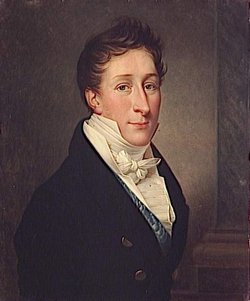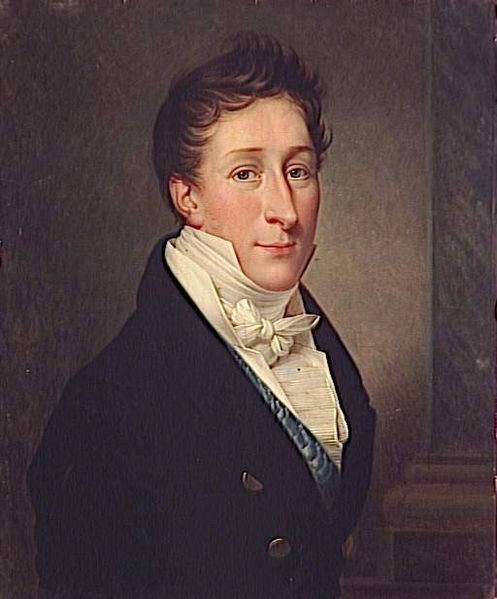Count. Louis Charles Alphonse Léodgard d'Orléans, son of Louis Philippe d'Orléans, Duke of Orléans, and his wife Louise Marie Adélaïde de Bourbon, was born at the Palais-Royale in Paris. He received the title of Count of Beaujolais. Louis Charles was the youngest of six children. His mother had inherited one of the largest fortunes in Europe. He and his siblings were educated by their governess, the former mistress of their father, at their father's insistence. In an age when boys were normally turned over to the care of men at age seven, the children were instead indoctrinated with her strong political views and alienated from their mother. His oldest brother Louis Philippe became a member of the Revolutionary Army under the name "Général Égalité" and his other brother Antoine joined his regiment in 1791. Their father also sided with the Revolution, and was elected to the National Convention in 1792, using the name "Philippe Égalité." However, realizing the violent direction in which the Revolution was headed for all nobility, including himself, his brother Louis Philippe defected to Austria and sought political asylum there in March of 1793, also escorting their sister Adélaïde and their governess to safety. Their father denounced his defection and voted for the death of his cousin Louis XVI of France. Despite this, their father "Philippe Égalité" was guillotined on November 6, 1793. Louis Charles and his brother Antoine Philippe had been imprisoned, and they both contracted tuberculosis. A friend of their mother's, Jacques Marie Rouzet, managed to secure their release as well as that of their mother in 1796. However, the brothers were exiled to Philadelphia after they won their freedom. Their older brother Louis Philippe joined them the following year. After spending time traveling in the United States, the brothers learned that their mother had gone into exile in Spain, and they planned to return to Europe. However, their vessel was captured by a British warship. They were taken to Havana and were unable to find passage to Europe. After a year, they were suddenly expelled by Spanish authorities. The brothers arrived in England in January of 1800 and settled in Twickenham, near London. His brother Antoine Philippe died of tuberculosis in England in 1807. In 1808, his remaining brother Louis Philippe took Louis Charles on a voyage in an attempt to improve his condition, which had deteriorated due to tuberculosis. However, the Count of Beaujolais died in Malta, shortly after their arrival. His body was eventually buried at Saint John's Co-Cathedral in Valletta, Malta. His tomb was sculpted by James Pradier. A replica was installed at the Chapelle Royale de Dreux, which was renovated and renamed by Louis Philippe I, King of the French, in 1830. That king was his brother.
Count. Louis Charles Alphonse Léodgard d'Orléans, son of Louis Philippe d'Orléans, Duke of Orléans, and his wife Louise Marie Adélaïde de Bourbon, was born at the Palais-Royale in Paris. He received the title of Count of Beaujolais. Louis Charles was the youngest of six children. His mother had inherited one of the largest fortunes in Europe. He and his siblings were educated by their governess, the former mistress of their father, at their father's insistence. In an age when boys were normally turned over to the care of men at age seven, the children were instead indoctrinated with her strong political views and alienated from their mother. His oldest brother Louis Philippe became a member of the Revolutionary Army under the name "Général Égalité" and his other brother Antoine joined his regiment in 1791. Their father also sided with the Revolution, and was elected to the National Convention in 1792, using the name "Philippe Égalité." However, realizing the violent direction in which the Revolution was headed for all nobility, including himself, his brother Louis Philippe defected to Austria and sought political asylum there in March of 1793, also escorting their sister Adélaïde and their governess to safety. Their father denounced his defection and voted for the death of his cousin Louis XVI of France. Despite this, their father "Philippe Égalité" was guillotined on November 6, 1793. Louis Charles and his brother Antoine Philippe had been imprisoned, and they both contracted tuberculosis. A friend of their mother's, Jacques Marie Rouzet, managed to secure their release as well as that of their mother in 1796. However, the brothers were exiled to Philadelphia after they won their freedom. Their older brother Louis Philippe joined them the following year. After spending time traveling in the United States, the brothers learned that their mother had gone into exile in Spain, and they planned to return to Europe. However, their vessel was captured by a British warship. They were taken to Havana and were unable to find passage to Europe. After a year, they were suddenly expelled by Spanish authorities. The brothers arrived in England in January of 1800 and settled in Twickenham, near London. His brother Antoine Philippe died of tuberculosis in England in 1807. In 1808, his remaining brother Louis Philippe took Louis Charles on a voyage in an attempt to improve his condition, which had deteriorated due to tuberculosis. However, the Count of Beaujolais died in Malta, shortly after their arrival. His body was eventually buried at Saint John's Co-Cathedral in Valletta, Malta. His tomb was sculpted by James Pradier. A replica was installed at the Chapelle Royale de Dreux, which was renovated and renamed by Louis Philippe I, King of the French, in 1830. That king was his brother.
Family Members
Advertisement
Explore more
- Louis Charles d'Orléans, Count of Beaujolais in Newspapers
- Louis Charles d'Orléans, Count of Beaujolais in Military Records
- View more records for Louis Charles d'Orléans, Count of Beaujolais at Ancestry.com
- Discover more with a simple DNA test
- More about the d'Orléans, Count of Beaujolais family name
Sponsored by Ancestry
Advertisement










